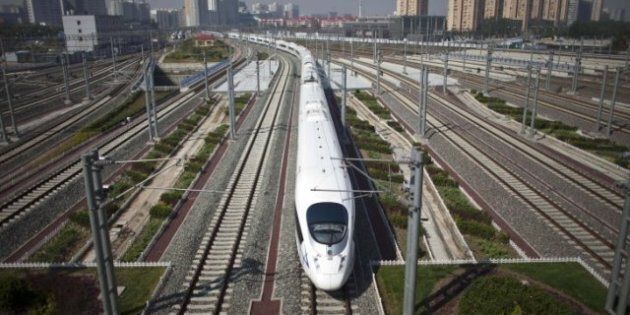
Despite the hype, it was never destined to be a breakthrough set of summits. At both the G20 gathering in Seoul and the APEC summit in Japan, participants warily watched the birth pangs of a new world order as China and the United States squared off over the unfolding of the world's economy.
While the other participants, including Canada, made do with sideline meetings, each was aware that the main event between the two great superpowers could have far-reaching effects on every advanced economy.
Canadians can be forgiven for experiencing difficulty in deciphering all the political rhetoric emanating from both gatherings. The Coles Notes version is this: The Chinese economy is clearly rivaling America's. The eastern giant is second only to the U.S. in computer sales, but has a larger proportion of first-time buyers. It has more cell phone users than the States. A clear indication of how things have changed can be seen in car sales. As recently as 2006, Americans bought twice as many cars as the Chinese; now the latter are in the lead. If things proceed as predicted, by 2050, the Chinese will be driving over a billion cars -- almost 50 per cent more than the current world total.
The greatest distinction between the two economic giants can be wrapped up in two words: production and consumption. Most new Chinese jobs are in the production field, whereas in the U.S. they are in retail sales and services. Chinese companies are plowing their rising profits into increased production, and this is leading to new companies, more equipment, more technologies.
While the U.S and Canada invested stimulus funds into short-term solutions, the Chinese dedicated almost $600 billion in enlarging the country's ability to produce -- railroads, power grids, and factories. While its capital spending is nearly equal to the Americans, their consumer spending is only a sixth as large. America, on the other hand, has primarily focused on spending and consumption, leaving precious little for the productive capacity and infrastructure required for the future.
Recently we've read of the rebound of General Motors, following government bailouts, but what isn't reported is that, in 2009, GM's sales in China were up a soaring 67 per cent from the year previous and that it sold more cars there than in the U.S. But the kicker is that virtually all of these cars were made in China itself, not America. GM received domestic assistance at the same time it was profiting significantly overseas. Increasingly, American companies are moving hefty portions of their operations away from the U.S. and into China.
The issue at the summit meetings was really one of currency and how the Chinese government controlled its flow. China wants to increase more jobs domestically and so it is investing heavily in production instead of consumption. It is to their advantage to keep their yuan undervalued because if the currency rose, Chinese exports would become more expensive in other countries and we'd buy fewer of their products.
All this has caused a huge trade imbalance between the two countries, benefiting China and hindering the U.S. recovery. Obama's attempts to challenge the Chinese to permit their currency to free-float were rebuffed by the Chinese leadership, leading to the mixed outcome of both summits.
There are lessons for Canada in this, but we appear not to be listening. With reports emerging that the Canadian stimulus funds haven't produced the effect hoped for, we might have missed a great opportunity to invest in this country's future if we had only put our money where our infrastructure is -- we missed the productivity quotient, opting instead for quick fixes that will eventually leave us with massive infrastructure problems.
China and America differ in how they have permitted money to flow in their economies. While the Chinese ploughed excess money into huge capital projects, the U.S., through ongoing rounds of tax cuts, saw their wealth move steadily up to the benefit of the top 10 per cent of wealthy citizens. It's now more clear who gets the better deal. Canada is currently running the risk of missing future productivity for the sake of present domestic political advantage.
Stephen Harper watched from the sidelines at the summits, but soon enough he'll have to enter centre stage with a limping stimulus investment and no real plan for future productivity. His next budget will have to address that reality or our fate will look more like that south of the border than the burgeoning economy that is China.